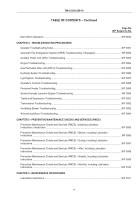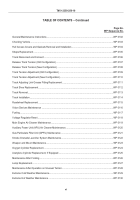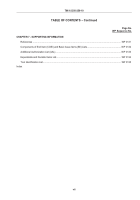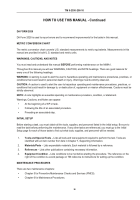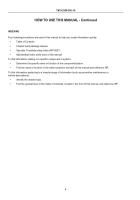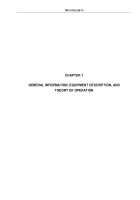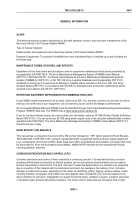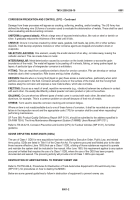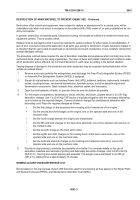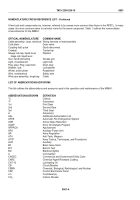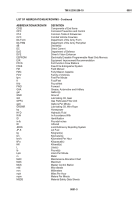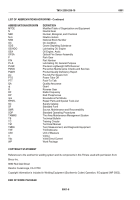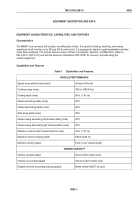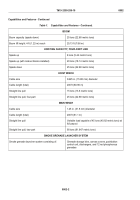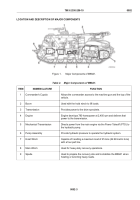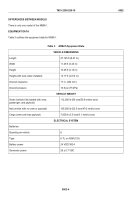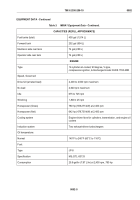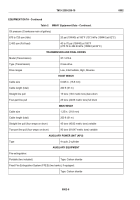TM-9-2350-256-10 - Page 31 of 796
DESTRUCTION OF ARMY MATERIEL TO PREVENT ENEMY USE - Continued
Destruction of the vehicle and equipment, when subject to capture or abandonment in a combat zone, will be
undertaken only when such action is necessary In Accordance With (IAW) orders of, or policy established by, the
Army commander.
In general, destruction of essential parts, followed by burning, will usually be sufficient to render the vehicle and
equipment useless. Time is usually critical.
Materiel must be damaged so that it cannot be restored to usable condition by either repair or cannibalization. If
lack of time or personnel prevents destruction of all parts, give priority to destruction of parts hardest to replace. It
is important that the same parts be destroyed on all vehicles to prevent construction of one complete vehicle from
several damaged vehicles.
The procedure outlined below requires the use of demolition materials and explosives which normally may not be
authorized items of issue to the using organization. The issue of these and related materials and conditions under
which destruction will be effected, are command decisions in each case, according to the tactical situation.
Varying degrees of damage to the armament and other equipment may be expected during destruction of the
vehicle as outlined below:
1.
Remove and empty portable fire extinguishers and discharge the Fixed Fire Extinguisher System (FFES)
or Automatic Fire Extinguisher System (AFES), if equipped.
2.
Smash all vital elements such as Auxiliary Power Unit (APU), batteries, switches, instruments, hydraulic
valves, coupling devices, mechanical transmission, hydraulic pumps, and all accessible engine and
transmission components. Slash hydraulic lines, electrical cables, and harnesses.
3.
Drain fuel and hydraulic oil tanks, or puncture them as near the bottom as possible.
4.
For the engine compartment, transmission, tracks, winches, and boom, prepare eleven 2 lb (0.91 Kg)
demolition charges. Use 1 lb (0.45 Kg) TNT blocks or equivalent together with the necessary detonating
cord to make up the required charges. Connect all eleven charges for simultaneous detonation with
detonating cord. Place the required charges as follows:
•
Set the first charge on the accessory drive housing at the forward end of the engine.
•
Set the second and third charges on the engine, one on the operator side and one on the
mechanic side.
•
Set the fourth charge between the engine and transmission.
•
Set the fifth and sixth charges on the track drive sprockets, one on the operator side and one on
the mechanic side.
•
Set the seventh charge on the main winch motor.
•
Set the eighth and ninth charges on the hoisting boom at the boom crank arms, one on the
operator side and one on the mechanic side.
•
Set the tenth and eleventh charges on the hoisting boom stayline crank arms, one on the
operator side and one on the mechanic side.
5.
Provide for dual priming to minimize the possibility of a misfire. For complete details on the use of
demolition materials and methods of priming and detonating demolition charges, refer to FM 3-34.214
(WP 0131). Training and careful planning are essential. The danger area is estimated to be 500 yd
(457.2 m); elapsed time is approximately 10 minutes.
NOMENCLATURE CROSS-REFERENCE LIST
Nomenclature in this manual was chosen IAW the terms used for provisioning as they appear in the Repair Parts
and Special Tools List (RPSTL) and Maintenance Allocation Chart (MAC).
TM 9-2350-256-10
0001
0001-3
Back to Top

